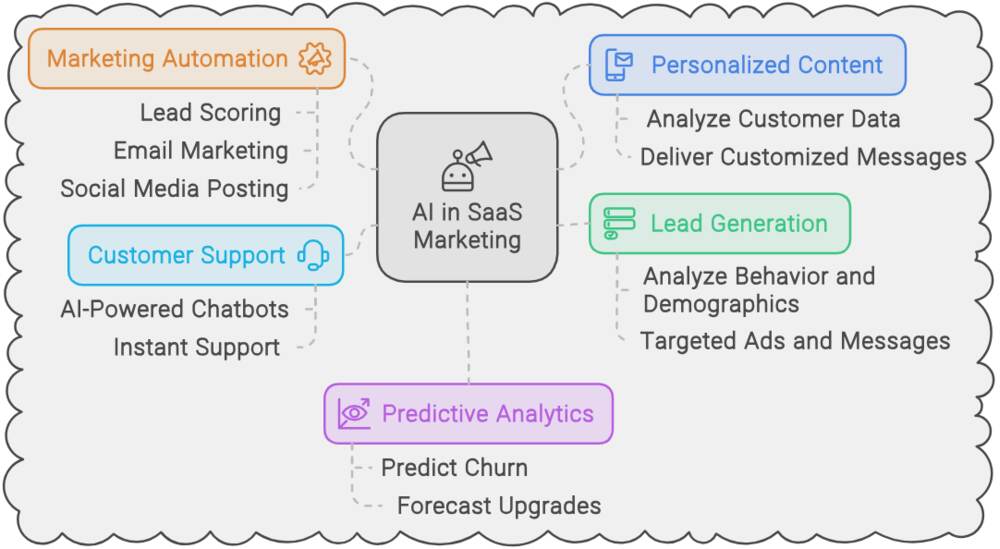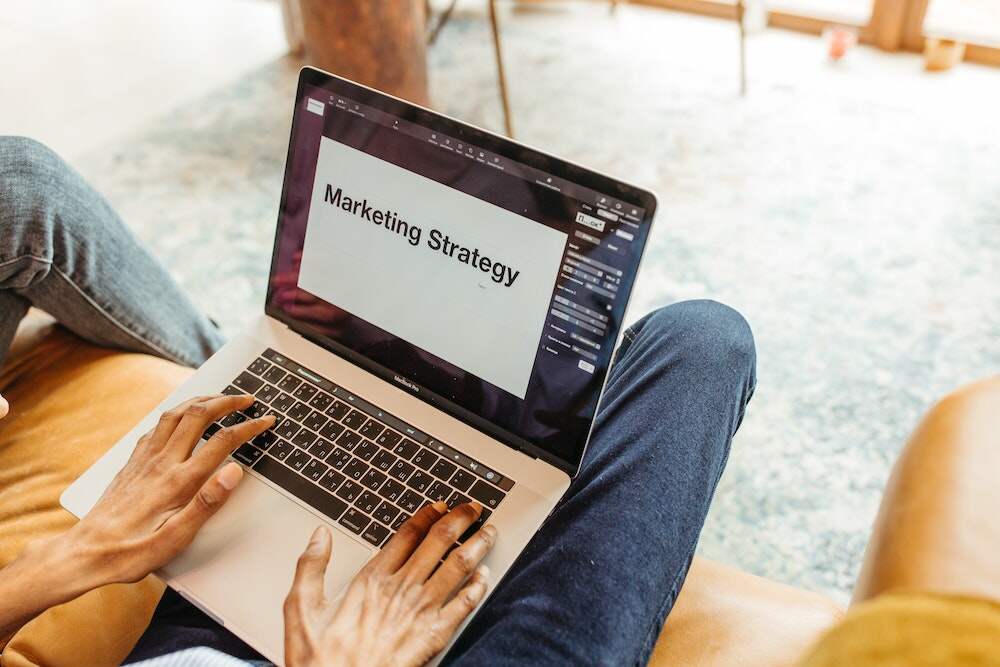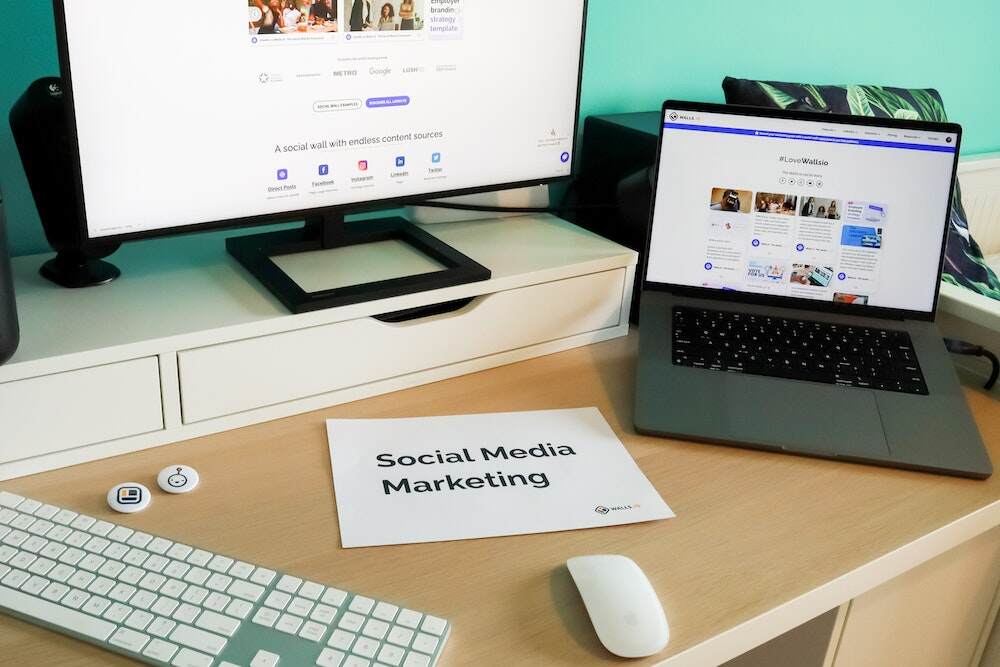How a Customer Engagement Platform Can Transform Your Marketing Strategy
See how a customer engagement platform can transform your marketing strategy with better personalization & interaction.

Accelerating Growth: Top SaaS Marketing Strategies for 2023" - This article explores the most effective marketing strategies for SaaS companies to grow faster in 2023. From account-based marketing to social media advertising, learn how to optimize your marketing efforts and achieve sustainable growth for your SaaS business.
The software-as-a-service (SaaS) industry has grown exponentially over the past few years, with many businesses turning to this model for their digital products. As a result, the marketing landscape is rapidly evolving to keep up with new technologies and strategies that successful SaaS companies are using.
To stay competitive in 2023, SaaS marketers need to understand how they can leverage customer data, optimize customer lifetime value, and utilize AI technology effectively.
One of the most effective SaaS marketing strategies to implement in 2023 is leveraging customer data. We are in an era where information is power, and companies that can tactfully acquire, analyze, and utilize customer data are well-positioned to succeed.
By analyzing key metrics like customer purchase history, behavior, preferences, and interactions with your product, you can gain valuable insights into how to optimize your marketing campaigns, improve customer acquisition and retention, and ultimately grow your business.
The first step towards leveraging customer data is to have a deep understanding of your target audience. This means collecting relevant data points and segmenting your audience into groups with similar characteristics.
It’s much easier to deliver personalized, relevant messaging to a small, well-defined group of customers rather than trying to catch everyone’s attention. By using data analysis tools and techniques, you can identify customer groups that are most likely to convert and offer them tailored solutions that meet their specific needs.
Another important aspect of leveraging customer data is understanding customer behavior through metrics such as customer lifetime value (CLV), churn rate, user engagement, and retention rate.
CLV is the measurement of the total value a customer brings to your business throughout their relationship with you. By understanding CLV, you can make informed decisions about how much to invest in acquiring and retaining customers, and how to allocate resources to maximize their lifetime value.
Churn rate is also a critical metric to monitor, as it indicates the proportion of customers leaving your service within a given period. By analyzing the churn rate, you can identify the underlying reasons why customers leave and implement measures to improve retention, such as providing better customer support or optimizing product usability.
User engagement and retention rates can also inform how you can improve the user experience of your product and increase the likelihood that customers will remain loyal.

Another crucial aspect of SaaS marketing strategy in 2023 is optimizing customer lifetime value (CLV). CLV is the total value that a customer brings to your business throughout their lifetime. Maximizing CLV is an effective way of achieving a higher return on investment (ROI) in your marketing campaigns.
By keeping your customers longer and making them purchase more, you can decrease the cost of acquiring new customers and increase revenue. To optimize CLV, you should create a comprehensive customer journey map that shows the different touchpoints through which customers interact with your product or service.
This will enable you to target your marketing efforts at each stage of the customer journey and improve the overall user experience. By tracking customers’ behavior across the entire journey, you can identify the pain points and areas for improvement and provide targeted solutions to enhance their experience.
Another way of optimizing CLV is through upselling and cross-selling. Upselling involves offering customers a higher-priced version of your product or service, while cross-selling involves recommending complementary items or services to your customers.
By analyzing customer data, you can identify the products or services that customers may be interested in, and offer them targeted upsell and cross-sell options. This will not only increase revenue but also enhance customer satisfaction and loyalty.
Another effective way of optimizing CLV is through customer referral programs. Referral marketing is one of the most effective ways of acquiring high-quality leads because customers trust recommendations from their peers.
By using referral programs, you can incentivize your existing customers to invite their friends and colleagues to try out your product or service. This will not only bring in new customers but also increase customer loyalty and retention.
Finally, providing exceptional customer support is critical in optimizing CLV. Customers are more likely to remain loyal and refer their friends to your product or service if they feel that their needs are being met and their concerns are being addressed promptly. By providing personalized and proactive customer support, you can create a positive customer experience that enhances customer loyalty and increases CLV.
Another important trend that has emerged in SaaS marketing is the use of artificial intelligence (AI) technology. This technology can help SaaS companies to automate marketing processes, improve lead generation, and optimize customer engagement. Here are some ways in which AI can be used to enhance SaaS marketing:

Additionally, AI-powered chatbots and marketing automation tools can help streamline marketing processes and improve customer support, ultimately leading to improved retention rates and higher revenue growth.
Another effective SaaS marketing strategy is leveraging micro-segmentation to identify and engage with your target market. Micro-segmentation is the process of dividing a large market into smaller segments based on specific criteria such as customer demographics, behavior, and preferences.
By using micro-segmentation, SaaS companies can create targeted marketing campaigns that resonate with specific customer segments. This means that marketing messages, advertising, and content are tailored to the needs, interests, and pain points of each customer segment.
The benefits of micro-segmentation are manifold. By creating highly targeted campaigns, SaaS companies can increase customer engagement, conversion rates, and revenue. Marketing campaigns that resonate with customers are more likely to be shared, which means that your brand can reach a wider audience and acquire new customers.
Moreover, micro-segmentation can help SaaS companies identify which customer segments are the most profitable and which ones require further attention. By analyzing customer data, SaaS companies can understand which customer segments have the highest customer lifetime value (CLV) and which ones have the highest potential for growth.

Once SaaS companies have identified their target market, they can implement personalized marketing campaigns that speak directly to their customers. For example, they can tailor their content to address specific pain points, showcase features that are relevant to their target market, and highlight use cases that are relevant to their customers’ industries.
Additionally, micro-segmentation can help SaaS companies to optimize their pricing strategies. By analyzing customer data, SaaS companies can identify which customer segments are most price-sensitive and which ones are willing to pay a premium for additional features or services. This can help SaaS companies create pricing models that are tailored to the needs and preferences of each customer segment.
In conclusion, leveraging micro-segmentation is an effective way for SaaS companies to identify and engage with their target market. By creating personalized marketing campaigns that resonate with specific customer segments, SaaS companies can increase customer engagement, conversion rates, and revenue.
Additionally, micro-segmentation can help SaaS companies optimize their pricing strategies and identify which customer segments have the highest growth potential.
One of the most effective ways to increase brand awareness and drive sales for your SaaS product is through influencer marketing. By partnering with influencers who have a large following in your target market, you can get the word out about your product and reach a wider audience.
Influencers can create content such as blog posts, social media posts, and videos that showcase your product in a positive light. They can also provide honest reviews and share their personal experiences with your product, which can be incredibly valuable in building trust and credibility with your audience.
When choosing influencers to partner with, it’s essential to find ones who have a strong connection with your target market. You want to make sure that their audience is likely to be interested in your product and that the influencer’s values align with your brand.
Additionally, it’s important to work with influencers who have high engagement rates and a loyal following. You want to make sure that their followers are actively engaging with their content and are likely to take action based on their recommendations.
To maximize the impact of influencer marketing, it’s essential to have a clear strategy in place. This may involve identifying specific goals, such as increasing brand awareness or driving sales, and developing a plan to track and measure the success of your influencer campaigns.
You may also want to consider offering incentives to influencers, such as exclusive access to your product or discounts for their followers. This can help to incentivize them to create high-quality content and promote your product in a more authentic way.
Influencer marketing can be a highly effective way to get the word out about your SaaS product and reach a wider audience. By partnering with influencers who have a strong following in your target market, you can benefit from their credibility and reach new customers. With a clear strategy and careful selection of influencers, you can maximize the impact of your influencer campaigns and drive growth for your business.
By creating high-quality, educational content such as blog posts and podcast episodes, SaaS companies can establish themselves as thought leaders in their industry and build trust with their audience. One key advantage of content marketing is that it allows SaaS companies to provide value to their customers beyond just promoting their products.
By creating content that is useful and informative, SaaS companies can establish themselves as sources of knowledge and expertise in their field. This can help to build credibility with potential customers and encourage them to engage more deeply with the brand. A key element of successful content marketing is understanding the needs and interests of your target market.
SaaS companies can leverage customer data to identify the topics and types of content that are most likely to resonate with their customers. By focusing on creating content that addresses the pain points and challenges of their customers, SaaS companies can create a more engaged and loyal audience.
Additionally, content marketing can be an effective way to improve search engine rankings and drive organic traffic to a website. By optimizing blog posts and other content for relevant keywords and topics, SaaS companies can improve their visibility and attract more potential customers.
When it comes to creating content, SaaS companies should focus on providing value and insights that are specific to their industry and target market. This may include sharing case studies and success stories, providing tips and best practices, and offering expert analysis and commentary on industry trends and developments.
Podcasting has also emerged as an increasingly popular format for SaaS companies to reach their audience. By creating podcast episodes that feature in-depth interviews with industry experts, insights on emerging trends, or thought-provoking discussions on relevant topics, SaaS companies can provide valuable information to their audience in an engaging and accessible way.
One of the best ways for SaaS companies to improve their marketing strategies and drive growth is through the use of A/B testing. This technique involves creating two versions of a marketing message or campaign and testing them against each other to see which performs better.
By analyzing the results, SaaS companies can identify the most effective messaging for their specific audience and optimize their marketing efforts accordingly. A/B testing can be used for a wide range of marketing initiatives, including email marketing campaigns, landing pages, and ad copy.
The key is to isolate the variable that you want to test, such as a specific word or phrase, and create two versions with that variable changed in one of them. By randomly assigning a subset of your audience to each version and tracking the results, you can gain valuable insights into what resonates best with your target market.
One of the biggest benefits of A/B testing is that it allows SaaS companies to make data-driven decisions about their marketing strategies. Rather than relying on guesswork or assumptions about what will work best, they can use real-world data to optimize their efforts and achieve better results. By continually testing and refining their messaging, SaaS companies can stay ahead of the curve and adapt to changing market conditions.
Another advantage of A/B testing is that it can help SaaS companies avoid wasting resources on ineffective marketing campaigns. By identifying the most effective messaging early on, they can focus their time and budget on initiatives that are more likely to drive growth and achieve their goals.
Of course, there are some important considerations to keep in mind when conducting A/B testing. For example, it’s important to only test one variable at a time to isolate its impact on the results. Additionally, you should ensure that your sample size is large enough to generate statistically significant results and that your testing is conducted over a reasonable period.
By pinpointing the most effective messaging for their audience and continually refining their efforts, SaaS companies can differentiate themselves from competitors and achieve sustained success in the digital world. With the right strategy and tools in place, any SaaS company can harness the power of A/B testing to achieve its marketing goals and drive growth in 2023 and beyond.

In today’s digital world, social media is an essential component of any SaaS marketing strategy. By leveraging social media platforms such as Facebook, LinkedIn, Twitter, and Instagram, SaaS companies can reach a wider audience and drive more conversions than ever before.
However, simply creating social media ads is not enough to guarantee success. SaaS companies need to optimize their ad campaigns to maximize their reach and conversions. There are many techniques that SaaS companies can use to optimize their social media ad campaigns.
One of the most effective is to use retargeting ads. Retargeting ads are ads that are shown to people who have already expressed interest in your product or service. By targeting people who have already engaged with your brand, you can increase the likelihood that they will convert.
Another strategy to optimize social media ad campaigns is to use lookalike audiences. Lookalike audiences are groups of people who have similar characteristics and behaviors to your existing customers. By targeting these audiences, you can increase the likelihood that they will be interested in your product or service.
It’s also important to use high-quality images and videos in your social media ad campaigns. Visual content is more engaging than written content and can help your ads stand out from the competition. Additionally, you should make sure that your ad copy is concise and compelling, with a clear call to action that motivates the viewer to take action.
Another way to optimize social media ad campaigns is to test different ad formats and placements. For instance, you can test Facebook carousel ads versus single image ads, or sponsored LinkedIn InMail versus LinkedIn-sponsored content.
By testing different formats and placements, you can identify which ones perform best for your specific audience. Finally, it’s important to track and measure the results of your social media ad campaigns.
By using tools like Google Analytics or Facebook Ads Manager, you can see how many people clicked on your ad, how long they stayed on your website, and how many conversions you received. By analyzing this data, you can identify areas where your ad campaigns can be improved, and make data-driven decisions about how to optimize your campaigns in the future.
Retargeting campaigns are an integral part of any SaaS marketing strategy. By targeting customers who have already interacted with your brand, you can increase the likelihood of conversions and encourage them to come back again. Retargeting campaigns can also help to increase brand awareness and recognition.
Retargeting campaigns work by using cookies to track visitors who have interacted with your website. Once a visitor leaves your website, retargeting ads can be displayed to encourage them to come back and engage with your brand. These ads can be displayed across various platforms and channels, including social media, search engines, and email.
One of the key benefits of retargeting campaigns is that they are highly targeted. By targeting visitors who have already interacted with your website, you can be sure that they are already interested in your product or service. This means that retargeting campaigns have a higher chance of success than other types of marketing campaigns.
Retargeting campaigns can also help to increase customer lifetime value (CLV). By encouraging customers to come back and engage with your brand, you can increase the likelihood of repeat purchases and customer loyalty. This can have a significant impact on your revenue and profitability over time.
When setting up retargeting campaigns, it’s important to segment your audience and tailor your ads to their specific needs and interests. This can help to increase the effectiveness of your campaigns and improve your ROI.
You should also conduct A/B testing to identify which ads perform best and refine your campaigns over time. Another factor to consider when investing in retargeting campaigns is ad frequency.
While retargeting ads can be highly effective, they can also become annoying and intrusive if displayed too frequently. It’s important to strike a balance between frequency and effectiveness to ensure that your ads are well-received and encourage engagement with your brand.
The growth of Software-as-a-Service (SaaS) companies in recent years has been nothing short of remarkable. From small startups to large enterprises, SaaS businesses have disrupted traditional industries and transformed the way we work and live.
As we move towards 2023, it’s clear that SaaS marketing is rapidly evolving to keep up with the pace of change. To succeed in this crowded and competitive marketplace, SaaS companies need to stay up-to-date with the latest trends and strategies.